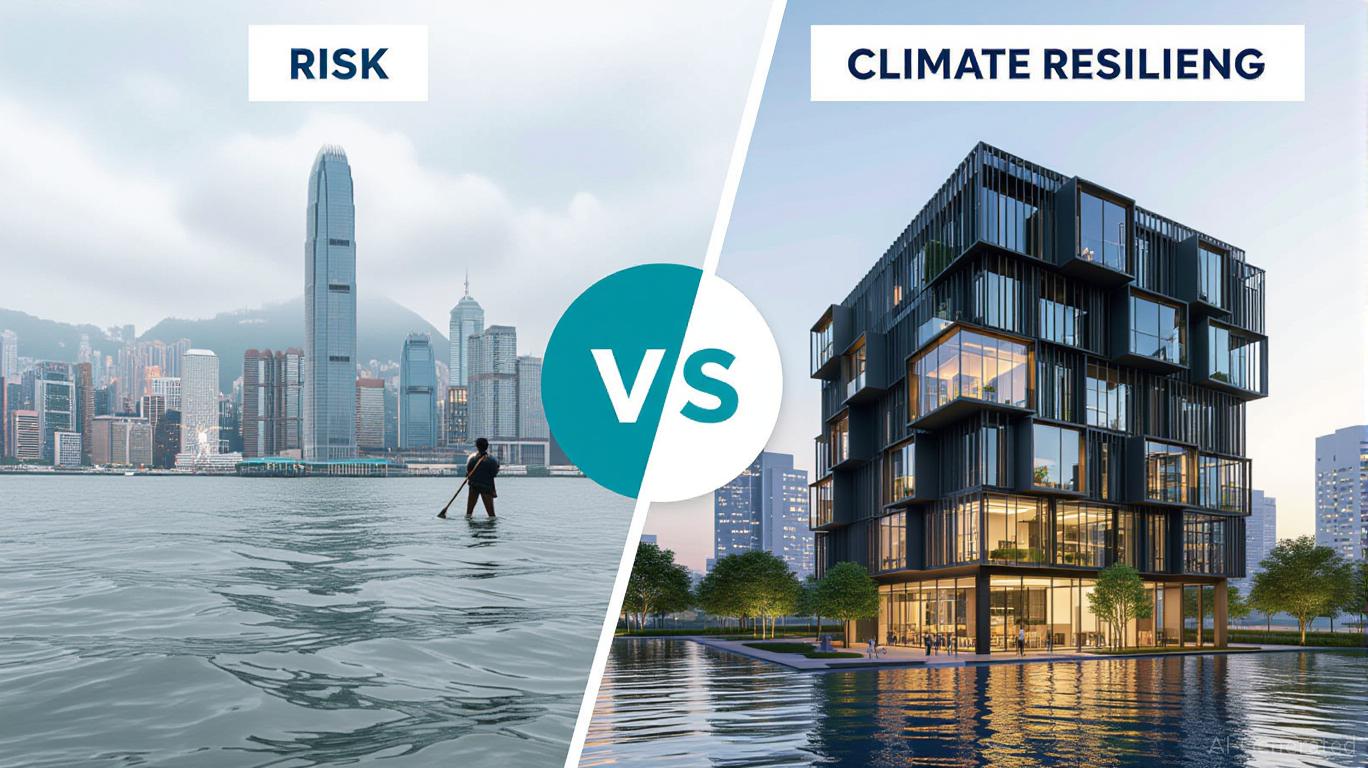Rhys NorthwoodWednesday, Jul 9, 2025 2:53 am ET
![]() 2min read
2min read
The relentless march of global temperatures—now 1.6°C above pre-industrial levels—has transformed climate risk from a distant concern into an immediate financial reality. For insurers and real estate investors, the stakes have never been higher. As heatwaves, wildfires, and floods intensify, industries built on assessing risk and securing assets face existential challenges—and unprecedented opportunities.
The Insurance Sector: Pricing the Unpredictable
The first half of 2025 underscored the new normal: record-breaking heat, unprecedented winter storms, and wildfires that destroyed over 17,000 structures in Southern California. Insurers now confront a stark reality—climate-driven losses are outpacing premiums.
Risk Exposure:
- Catastrophe Frequency: The 2023–2024 El Niño supercharged storms like Hurricane Beryl and Typhoon Shanshan, while 2025's January floods in the U.S. Gulf Coast broke records.
- Cost Inflation: The Insurance Information Institute estimates climate-related losses could exceed $100 billion annually by 2030, up from $65 billion in 2020.
Opportunity in Adaptation:
- Underwriting Innovation: Firms like Allianz (ALV.Germany) and Swiss Re (SWX:SWXN) are leveraging climate models to exclude high-risk zones (e.g., coastal Florida) or demand retrofitted properties.
- New Product Frontiers: Catastrophe bonds (e.g., ICPA, issued by AXA) and parametric insurance (triggered by measurable events like rainfall) are gaining traction.

Real Estate: A Shift in Asset Valuation
The real estate sector is undergoing a quiet revolution. Properties in flood-prone areas or wildfire corridors are losing value, while demand surges for climate-resilient designs.
Risk Exposure:
- Physical Damage: In 2025, wildfires destroyed over 23,000 acres in Texas, while heatwaves in Europe reduced property values in regions like Sicily by 15–20%.
- Liability Risks: Lawsuits against developers who ignore climate risks (e.g., inadequate drainage systems) are rising.
Opportunity in Resilience:
- Green Infrastructure: Buildings with solar panels, green roofs, and flood barriers command premiums. Firms like Brookfield (BAM.N) are prioritizing urban projects in temperate zones (e.g., the Pacific Northwest).
- Location Arbitrage: Investors are shifting capital to “climate havens”—e.g., higher elevations in the Rockies or cooler inland regions like the U.S. Midwest.
Investment Strategies for a Warming World
- Insurance:
- Underweight High-Risk Portfolios: Avoid insurers with heavy exposure to coastal markets.
Back Innovators: Companies investing in AI-driven climate analytics (e.g., XL Group (XL.N)) or parametric insurance platforms (e.g., Munich Re (MUV.Germany)).
Real Estate:
- Focus on Adaptation: Buy into REITs (Real Estate Investment Trusts) with portfolios in resilient zones. Consider Vornado Realty Trust (VNO.N), which emphasizes energy-efficient urban centers.
Green Tech Plays: Invest in construction firms (e.g., Bechtel) specializing in climate-resilient materials like fire-resistant cladding or flood-proof foundations.
Policy-Driven Plays:
- Monitor government subsidies for retrofitting (e.g., U.S. Inflation Reduction Act grants) and divest from coal/oil-linked REITs.
The Bottom Line
Climate change is not a distant threat—it is reshaping asset values and insurance liabilities today. Investors who ignore it risk obsolescence, while those who embrace adaptation can profit from a $1.4 trillion annual global market for climate-resilient infrastructure by 2030. The time to act is now: the hottest year on record is no longer a headline—it's a baseline.
In this era of extremes, the winners will be those who turn climate risk into strategic advantage.









 English (US) ·
English (US) ·